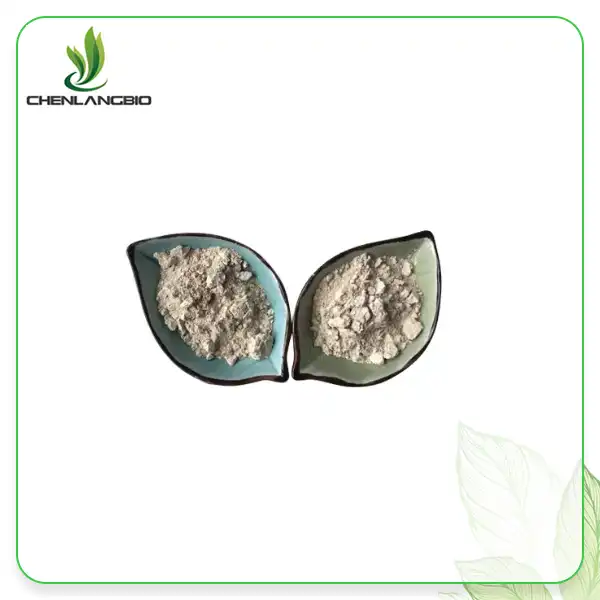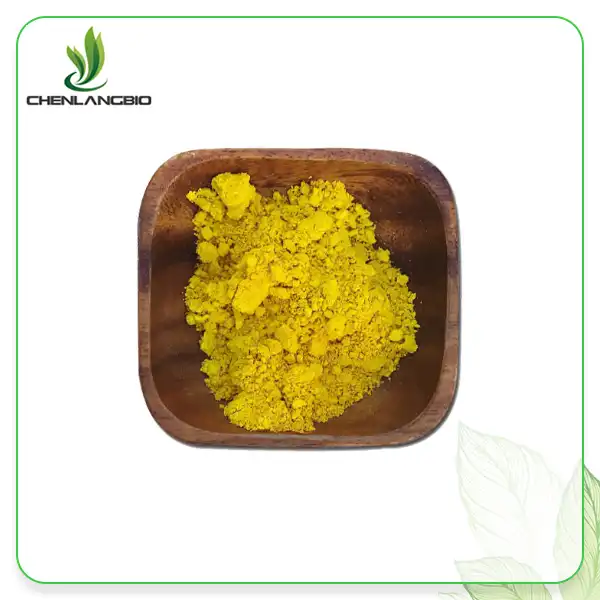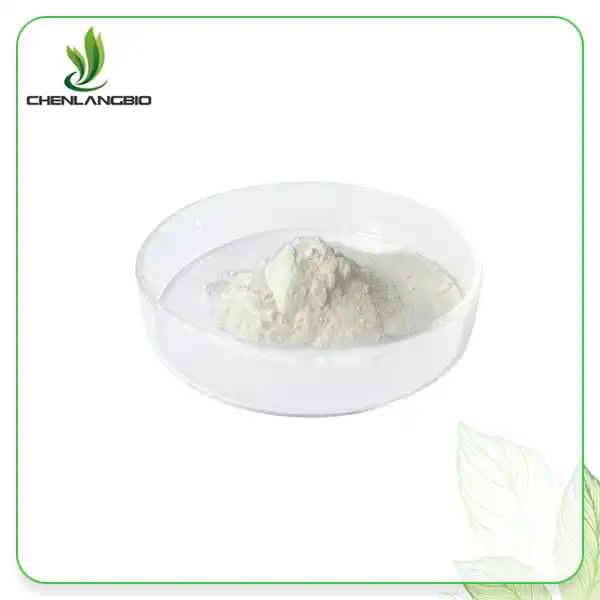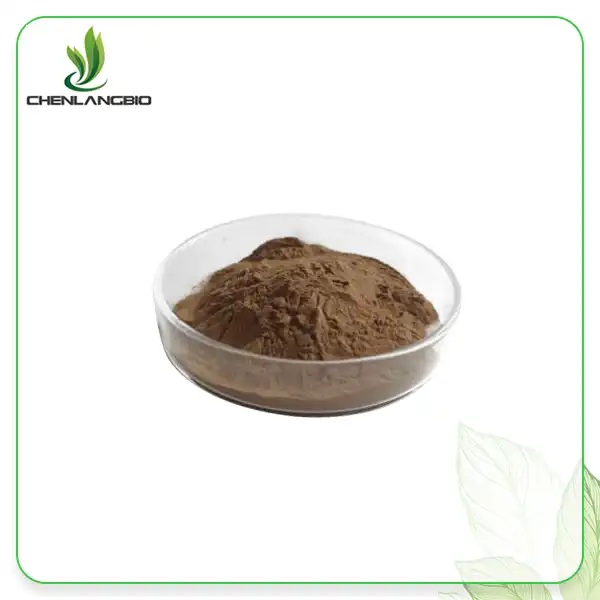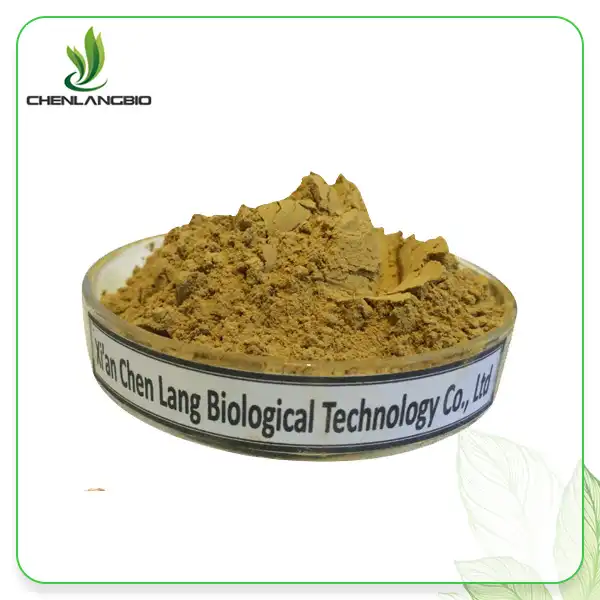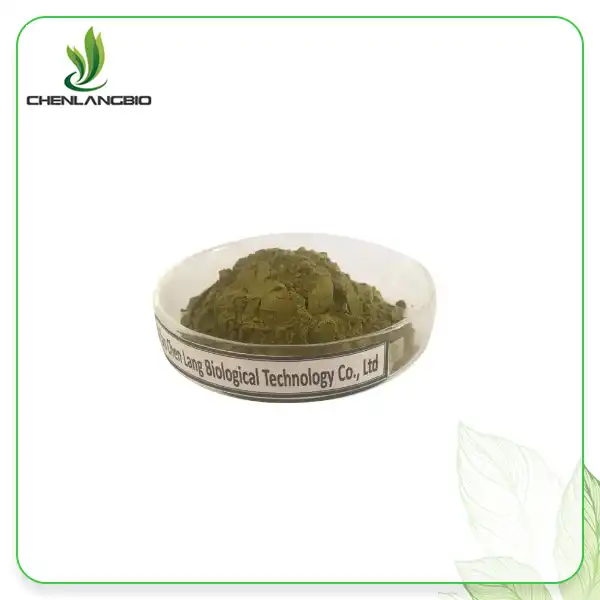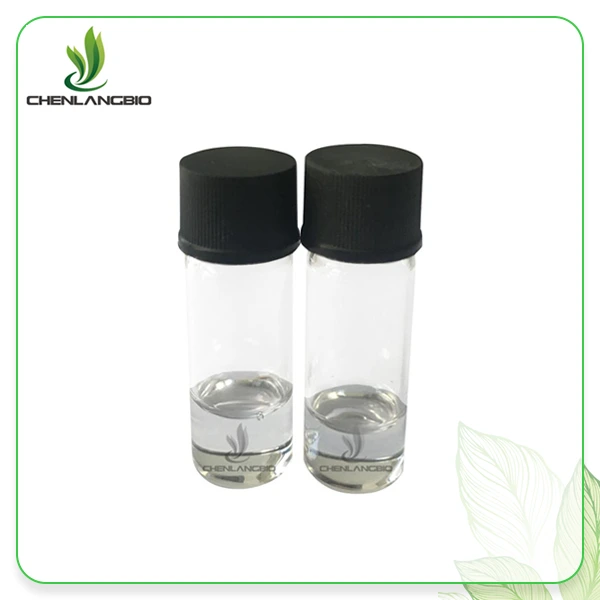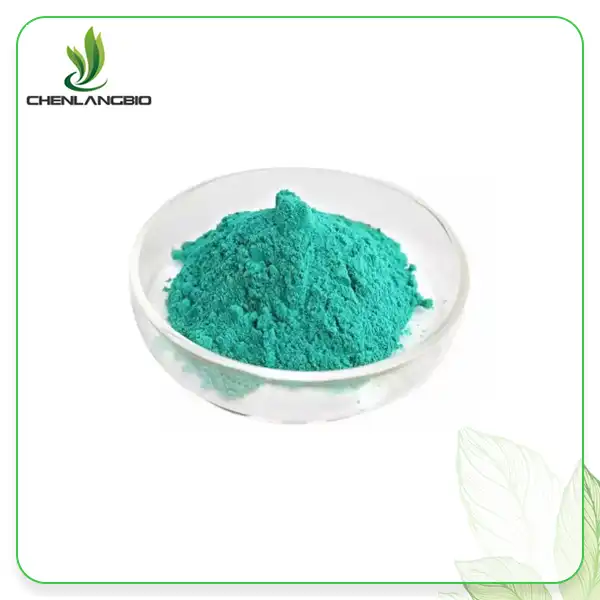Why Is Vitamin D3 Powder Critical in Combating Nutritional Deficiencies Globally?
2025-07-24 08:40:24
Vitamin D3 deficiency has emerged as one of the most prevalent nutritional challenges worldwide, affecting billions of people across diverse geographical regions and demographics. This widespread deficiency stems from reduced sun exposure due to urbanization, increased indoor lifestyles, environmental pollution, and heightened awareness of skin cancer risks. Vitamin D3 powder, also known as cholecalciferol, represents a revolutionary solution to this global health crisis, offering a concentrated, stable, and highly bioavailable form of this essential nutrient. As a fat-soluble vitamin that plays crucial roles in calcium absorption, bone health, immune function, and cellular processes, Vitamin D3 Powder provides an effective means of addressing deficiencies that traditional dietary sources cannot adequately fulfill, making it an indispensable component in modern nutritional supplementation strategies.
The Global Prevalence and Impact of Vitamin D3 Deficiency
Understanding the Scope of Worldwide Vitamin D3 Deficiency
The global burden of Vitamin D3 deficiency has reached epidemic proportions, with research indicating that approximately one billion people worldwide suffer from inadequate vitamin D levels. This deficiency transcends geographical boundaries, affecting populations in both developed and developing nations, though the severity varies based on latitude, seasonal changes, and cultural practices. Vitamin D3 Powder has become increasingly important as a therapeutic intervention because traditional synthesis through sun exposure has become insufficient for most populations. The human body naturally produces Vitamin D3 when skin cholesterol is exposed to ultraviolet B radiation from sunlight, requiring approximately 4-6 hours of direct sunlight exposure daily. However, modern lifestyle factors, including indoor occupations, urbanization, and the widespread use of sunscreen, have dramatically reduced natural synthesis rates. Additionally, atmospheric pollution and ozone depletion have further diminished the quality and intensity of beneficial UV radiation reaching the earth's surface, making Vitamin D3 supplementation through powder formulations essential for maintaining adequate serum levels.
Health Consequences of Prolonged Vitamin D3 Deficiency
Chronic Vitamin D3 deficiency manifests in numerous debilitating health conditions that significantly impact quality of life and increase healthcare costs globally. Rickets in children and osteomalacia in adults represent the most severe manifestations of deficiency, characterized by bone deformities, muscle weakness, and increased fracture risk. Vitamin D3 Powder supplementation has proven highly effective in preventing and treating these conditions by ensuring adequate calcium and phosphorus absorption from the intestinal tract. Beyond skeletal health, emerging research has established strong correlations between Vitamin D3 deficiency and increased susceptibility to respiratory infections, autoimmune disorders, cardiovascular disease, and certain cancers. The immune-modulating properties of Vitamin D3 are particularly significant, as adequate levels support the production of antimicrobial peptides and regulate inflammatory responses. Clinical studies have demonstrated that individuals with optimal Vitamin D3 status experience reduced incidence of seasonal influenza, shorter duration of respiratory infections, and improved overall immune function. Furthermore, deficiency has been associated with increased risk of multiple sclerosis, type 1 diabetes, and inflammatory bowel diseases, highlighting the critical importance of maintaining adequate levels through targeted supplementation with high-quality Vitamin D3 Powder formulations.
Economic and Social Implications of Vitamin D3 Deficiency
The economic burden of Vitamin D3 deficiency extends far beyond individual health costs, imposing substantial strain on healthcare systems and reducing productivity across multiple sectors. Healthcare expenditures related to fractures, falls, and chronic diseases associated with deficiency amount to billions of dollars annually in developed countries alone. Vitamin D3 Powder represents a cost-effective preventive intervention that can significantly reduce these economic burdens while improving population health outcomes. The social implications are equally profound, as deficiency disproportionately affects vulnerable populations, including the elderly, pregnant women, infants, and individuals with limited sun exposure due to cultural or occupational factors. In many developing nations, where access to fortified foods is limited, Vitamin D3 supplementation through powder formulations offers a practical solution for addressing widespread deficiency. The powder format provides advantages in terms of stability, shelf life, and ease of incorporation into existing food systems or supplement programs. Additionally, the economic impact extends to lost productivity due to illness, reduced cognitive function, and decreased physical performance associated with deficiency states, making widespread supplementation with quality Vitamin D3 Powder not only a health imperative but an economic necessity for sustainable development.
Scientific Mechanisms and Therapeutic Applications of Vitamin D3 Powder
Molecular Mechanisms of Vitamin D3 Action and Metabolism
The biological activity of Vitamin D3 Powder involves complex metabolic pathways that begin with absorption in the small intestine and subsequent conversion to active hormonal forms. Upon ingestion, Vitamin D3 undergoes hepatic 25-hydroxylation to form 25-hydroxyvitamin D3, the major circulating form used for assessment of vitamin D status. This metabolite then undergoes renal 1α-hydroxylation to produce 1,25-dihydroxyvitamin D3, the most potent active form that binds to vitamin D receptors throughout the body. Vitamin D3 exerts its effects through both genomic and non-genomic mechanisms, influencing the expression of over 1,000 genes involved in calcium homeostasis, immune function, cell proliferation, and differentiation. The powder formulation ensures optimal bioavailability by providing a concentrated source that can be easily incorporated into various delivery systems. The fat-soluble nature of Vitamin D3 Powder requires adequate lipid absorption for optimal uptake, and modern formulations often include absorption enhancers or are designed for specific delivery methods to maximize therapeutic efficacy. Understanding these mechanisms is crucial for developing targeted therapeutic interventions and optimizing dosing strategies for different populations and health conditions.
Calcium and Phosphorus Homeostasis Enhancement
One of the most critical functions of vitamin D3 powder involves the regulation of calcium and phosphorus homeostasis, which is essential for maintaining bone health, muscle function, and numerous cellular processes. The active form of Vitamin D3 stimulates intestinal calcium absorption by upregulating calcium-binding proteins and calcium channels in the duodenum and jejunum, increasing absorption efficiency from approximately 10-15% to 30-40% under adequate vitamin D status. Vitamin D3 also enhances phosphorus absorption through the intestinal wall and promotes phosphorus reabsorption in the renal tubules, ensuring optimal mineral balance for bone mineralization and cellular energy metabolism. The powder formulation provides consistent dosing and reliable absorption patterns, making it particularly valuable for individuals with malabsorption conditions or those requiring precise therapeutic interventions. Clinical studies have demonstrated that Vitamin D3 Powder supplementation can significantly improve bone mineral density, reduce fracture risk, and enhance muscle strength in deficient individuals. The enhanced bioavailability of powder formulations ensures that therapeutic levels can be achieved more rapidly and maintained more consistently than with traditional tablet or capsule formulations, making it the preferred choice for both prevention and treatment of deficiency-related conditions.
Immune System Modulation and Disease Prevention
The immunomodulatory effects of Vitamin D3 Powder extend far beyond its traditional role in calcium metabolism, encompassing both innate and adaptive immune responses that are crucial for disease prevention and health maintenance. Vitamin D3 receptors are present in virtually all immune cells, including macrophages, dendritic cells, T lymphocytes, and B lymphocytes, indicating the widespread importance of adequate vitamin D status for optimal immune function. Vitamin D3 stimulates the production of antimicrobial peptides such as cathelicidin and defensins, which provide the first line of defense against bacterial, viral, and fungal pathogens. Additionally, it modulates the production of pro-inflammatory cytokines while promoting anti-inflammatory responses, helping to maintain immune homeostasis and prevent excessive inflammatory reactions. The powder formulation allows for flexible dosing strategies that can be tailored to individual immune support needs, whether for general health maintenance or therapeutic intervention during illness. Research has shown that Vitamin D3 Powder supplementation can reduce the incidence and severity of respiratory tract infections, improve vaccine responses, and support the management of autoimmune conditions. The rapid dissolution and absorption characteristics of powder formulations make them particularly suitable for acute immune support scenarios where quick therapeutic response is desired.
Manufacturing Excellence and Quality Assurance in Vitamin D3 Powder Production
Advanced Production Technologies and Equipment
The manufacturing of high-quality Vitamin D3 Powder requires sophisticated production technologies and equipment that ensure consistent potency, purity, and stability throughout the product lifecycle. Modern production facilities utilize advanced extraction and purification techniques, including dynamic countercurrent extraction, column separation technology, membrane separation technology, and high-efficiency countercurrent extraction systems. These technologies enable the production of Vitamin D3 with exceptional purity levels while maintaining the delicate molecular structure essential for biological activity. The implementation of microwave drying technology and spray drying techniques ensures optimal moisture content and particle size distribution, critical factors that influence dissolution rates and bioavailability. Quality manufacturing facilities maintain strict environmental controls, including temperature, humidity, and contamination prevention measures, to ensure product integrity from raw material processing through final packaging. The production capacity of leading manufacturers, such as those achieving 600 tons annually of plant extract powder and related chemical compounds, demonstrates the scalability of modern production methods while maintaining quality standards. Investment in cutting-edge equipment and continuous process improvement ensures that Vitamin D3 Powder meets the highest international standards for pharmaceutical and nutraceutical applications.
Comprehensive Quality Control and Testing Protocols
Rigorous quality control measures are essential for ensuring the safety, efficacy, and consistency of vitamin D3 powder products throughout the manufacturing process. Advanced analytical equipment, including high-performance liquid chromatography with evaporative light scattering detection (HPLC-ELSD), provides precise quantification of active compounds and detection of potential impurities. Atomic fluorescence spectrometry and ultraviolet-visible spectrophotometry enable comprehensive analysis of heavy metals, residual solvents, and other contaminants that could compromise product quality. Vitamin D3 testing protocols include identity verification, potency assays, dissolution testing, and stability studies under various storage conditions. Microbial testing ensures the absence of pathogenic organisms and verifies that total microbial counts remain within acceptable limits for the intended application. Rapid moisture analysis prevents degradation and ensures optimal shelf life by maintaining proper water activity levels. The implementation of current Good Manufacturing Practices (cGMP) and adherence to international quality standards, including ISO 9001-2015, ISO 22000, HALAL, and Kosher certifications, provides additional assurance of product quality and safety. Regular third-party testing and validation further strengthen quality assurance programs, ensuring that Vitamin D3 Powder consistently meets or exceeds regulatory requirements and customer expectations.
Regulatory Compliance and International Standards
The global nature of Vitamin D3 Powder distribution requires comprehensive understanding and adherence to diverse regulatory frameworks and international standards that govern nutritional supplement manufacturing and marketing. Regulatory compliance encompasses every aspect of production, from raw material sourcing and facility design to labeling requirements and post-market surveillance. The molecular formula C27H44O and molecular weight of 384.64 for Vitamin D3 must be accurately reflected in all regulatory submissions and product documentation. CAS number 67-97-0 provides unique identification for regulatory purposes across different jurisdictions, ensuring proper classification and handling throughout the supply chain. Manufacturing facilities must maintain detailed documentation of all production processes, quality control testing, and batch release procedures to support regulatory inspections and product recalls if necessary. International certifications such as FAMI-QS for feed additives, BRC for food safety, and various organic certifications expand market access while demonstrating commitment to quality and safety. The maintenance of comprehensive regulatory compliance not only ensures legal market access but also builds trust with customers and end-users who rely on Vitamin D3 Powder for health and wellness applications. Continuous monitoring of regulatory changes and proactive adaptation of manufacturing processes ensures ongoing compliance and market competitiveness in the dynamic global supplement industry.
Conclusion
The critical role of vitamin D3 powder in addressing global nutritional deficiencies cannot be overstated, as it represents a scientifically-proven, cost-effective solution to one of the world's most prevalent health challenges. Through advanced manufacturing processes, rigorous quality control, and comprehensive regulatory compliance, high-quality Vitamin D3 Powder formulations provide reliable therapeutic benefits that extend far beyond basic nutrition to encompass immune support, bone health, and disease prevention. The global reach and scalability of modern production methods ensure accessibility while maintaining the highest standards of safety and efficacy for diverse populations worldwide. Ready to combat nutritional deficiencies with premium Vitamin D3 Powder? Partner with CHENLANGBIO, your trusted manufacturer with over 35 years of excellence in producing high-quality nutritional supplements. Our state-of-the-art facilities, comprehensive certifications, and commitment to innovation ensure you receive the finest Vitamin D3 Powder available. With our annual production capacity of 600 tons, extensive R&D capabilities, and partnerships with leading research institutions, we're equipped to meet your specific requirements while maintaining the highest quality standards. Don't let nutritional deficiencies compromise health outcomes – contact us today at admin@chenlangbio.com to discuss your Vitamin D3 Powder needs and experience the CHENLANGBIO difference in quality, service, and reliability.
References
1. Holick, M.F. (2017). The vitamin D deficiency pandemic: Approaches for diagnosis, treatment and prevention. Reviews in Endocrine and Metabolic Disorders, 18(2), 153-165.
2. Pludowski, P., Holick, M.F., Grant, W.B., Konstantynowicz, J., Mascarenhas, M.R., Haq, A., & Povoroznyuk, V. (2018). Vitamin D supplementation guidelines. Journal of Steroid Biochemistry and Molecular Biology, 175, 125-135.
3. Cashman, K.D., Dowling, K.G., Škrabáková, Z., Gonzalez-Gross, M., Valtueña, J., De Henauw, S., & Kiely, M. (2016). Vitamin D deficiency in Europe: pandemic or not? American Journal of Clinical Nutrition, 103(4), 1033-1044.
4. Martineau, A.R., Jolliffe, D.A., Hooper, R.L., Greenberg, L., Aloia, J.F., Bergman, P., & Camargo, C.A. (2017). Vitamin D supplementation to prevent acute respiratory tract infections: systematic review and meta-analysis. British Medical Journal, 356, i6583.
Send Inquiry
Related Industry Knowledge
- What Are the Key Benefits of Using Serrapeptase Powder in Your Products?
- How Does β-NMN Rrelate to NAD+ and Aging?
- What is the Difference Between Turmeric Powder and Curcumin Powder
- Rutecarpine Powder: Benefits, Uses, and Safety
- Sea Buckthorn Oligopeptide vs. Collagen: Which is Better
- Is Camellia Oleifera Seed Extract Good for Skin
- How Do You Use Magnesium Ascorbyl Phosphate
- Is Alpha-GPC a Good Nootropic
- What Is Lufenuron Used For
- Hydroxypinacolone Retinoate



